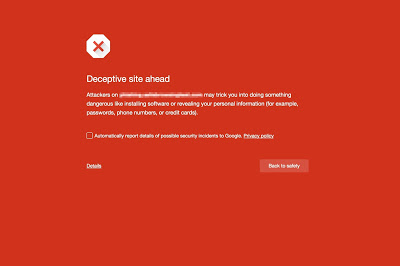Google will slap big red warning on legit sites hosting bad ads


What Chrome users will see when they come across a site hosting a bad ad.
Google is casting a wider net with its Safe Browsing technology to protect Chrome users, not just from deceptive websites but also from deceptive ads on legitimate sites.
Using the new capabilities, Safe Browsing will target deceptive 'embedded content', such as ads that pose as a trusted entity and present messages such as a system warning, or bogus security alert for Chrome and third-party media players.
Scam ads of this type may present a message that falsely claims a system is out of date to encourage the installation of bogus software. They also include deceptive download buttons.
Google's Safe Browsing list of sites known to serve phishing or malware attacks has been used by Chrome, Firefox, and Safari for several years. Over the years it's been tweaked to tackle different issues as they arise, such as potentially unwanted programs. It was recently extended to Chrome on Android.
See also
But whereas Google defines phishing as sites or emails that specifically pursue user credentials, Google in November began using Safe Browsing to tackle the broader threat of social engineering, which could involve a website pretending to offer a Chrome update to trick the user into installing unwanted software or malware.
This next phase incorporates that policy update. But instead of targeting only social-engineering websites, it tackles shady ads on otherwise harmless websites. Those ads could pose as a trusted entity, such as Chrome, or try to trick users into sharing credentials.
Another example are buttons that mimic the look and feel of a TV show or sports video stream and purport to produce content related to a site.
Google notes the new Safe Browsing feature may have an impact on legitimate websites that display deceptive ads.
"If visitors to your web site consistently see social-engineering content, Google Safe Browsing may warn users when they visit the site," Google notes.
The warning Google posts in its blog demonstrates that its alerts will indicate that the site itself is deceptive.
Bad ads are high on Google's agenda going into 2016, and it appears the company wants others in the industry to clean up their acts while Google does more to prevent such ads being distributed through its own ad business.
The company's ads and commerce boss recently boasted it blocked 780 million such ads from its ad business last year and that it had 1,000 people worldwide dedicated to weeding out such material.
The company said it has also built technology to determine when clicks on mobile ads are accidental.